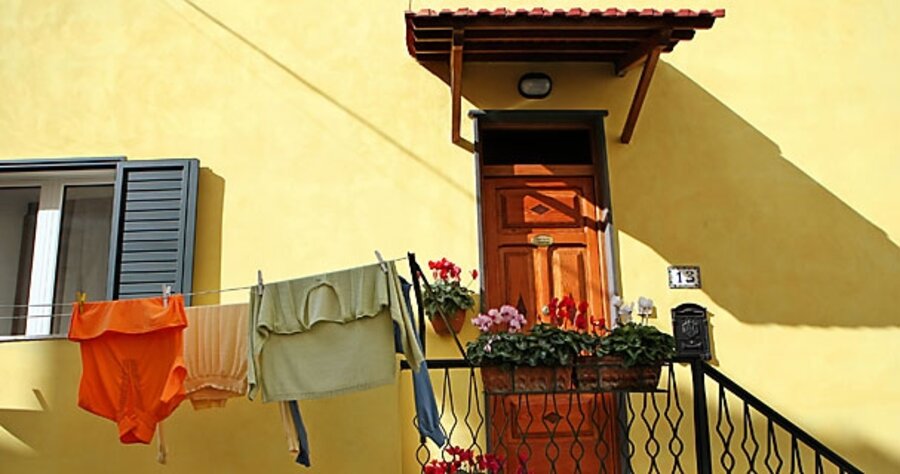Heat up that iron: a guide to ecofriendly clothing care
Loading...
Even if a person’s closet doesn’t contain a single item made of organic or recycled fabric, she can still help the environment – without heading to the store.
That’s because “more energy goes into caring for and cleaning a garment than [making] it,” says Todd Copeland of Patagonia, which specializes in ecofriendly outdoor clothing.
In fact, about 60 percent of the energy use associated with a piece of clothing comes from cleaning it, according to a 2006 University of Cambridge Institute for Manufacturing study.
Greener options can be as simple as switching to an environmentally friendly detergent, washing in cold water (which can save you $65 a year and cut your washer’s energy use by 75 percent), and skipping the fabric-softener sheets. Spending extra time on the laundry means greater energy savings and, often, cost savings as well.
Air-drying is the cheapest and most environmentally friendly way to dry clothes. It’s not effort-free, and clotheslines may not be an option if you live in an apartment or a neighborhood where they’re against regulations. But there are ways to work around that.
Kristi Wiedemann of GreenerChoices.org, for example, uses a drying rack for her clothes.
For her part, Rachel Sarnoff of EcoStiletto – an online magazine about sustainable fashion, beauty, lifestyle, and parenting – hand washes her garments that are labeled dry clean-only. (She says she did ruin a rayon garment, but so far, nothing made of natural fibers.)
However, the Los Angeles mother of three isn’t up for long sessions with her iron, so she says she buys only things that will look good coming off the drying rack.
If your budget has room for a new appliance, a dryer with an automatic sensor can cut energy costs significantly, ultimately paying for itself, says Pat Slaven of Consumers Union, which publishes Consumer Reports magazine. “It’s a great way for consumers to save energy without even trying.”
The California Energy Commission estimates that an iron, turned on once a week for an hour, will use approximately 52 kWh of energy per year. A clothes dryer uses somewhere between 900 and 950 kWh, so even if you have to touch up some of your garments, the energy savings are substantial.
Ms. Slaven also warns that, because front-loading washers spin so much faster than top loaders (allowing them to use less water), those owners will be spending more time with an iron, smoothing out the creases in natural fibers that set in during the wash.
On the other hand, “With a top loader and polyester, the wrinkles are literally going to fall out of [clothes],” she says.
But for those living in areas where conserving water is a big concern, she adds, a front-loading washer is absolutely the best choice.
When Nau, a sustainable clothing company based in Oregon, began, “One of the things we challenged ourselves with was the cleaning of the garment,” says Jamie Bainbridge. “We took the garments we wanted to make and tried washing them at home. We didn’t make any garments that couldn’t be hand washed in your bathtub at home.”
But, she acknowledges, it may take time for younger consumers to get used to pulling out the Woolite. “Consumers have lost the fine art of hand washing [clothes]. If you talk to most people getting out of college, they screw up their face and say, ‘What?’ ”
Editor’s note: The original version of this article misspelled the name of EcoStiletto. Another article about the environmental impact of clothing choices – “Before you buy those organic bluejeans” – appeared in the Monitor on Monday,
Sept. 29.


